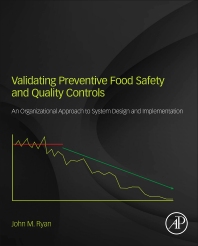No Time to Waste: Why Grocery Stores are Removing ‘Best By’ Dates

Confusion surrounding packaging food labels, is often cited as a contributor to food waste across the country. United States Department of Agriculture (USDA) statistics show the average American household wastes up to 40% of their food each year. Photo: Adobe iStock
By Charles Haverfield
Across the U.S., new voluntary industry standards for food date labelling have recently been adopted. Under this system, “use-by” dates are applied to foods as a “deadline” when a food will then present a high food poisoning risk.
“Best before” dates, on the other hand, indicate food quality and recommend when a product’s taste and texture will be at their best.
However, it seems many consumers have different interpretations of these labels and studies show more than 80% don’t understand them. Research has also repeatedly found that many consumers mix the two terms up, throwing away food as soon as it reaches its “best-before” date, because they think it is unsafe to eat after this.
 Charles Haverfield
Charles HaverfieldConfusion surrounding packaging food labels, is often cited as a contributor to food waste across the country. United States Department of Agriculture (USDA) statistics show the average American household wastes up to 40% of their food each year.
Fortunately, it seems global grocery stores are making strides to try to eliminate customer confusion. Most recently, Aldi UK confirmed the removal of best-before dates from around 60 of its fresh fruit and vegetable lines. Many other UK supermarkets already have a similar scheme in place or are following suit. There’s no need to refer to a label when you can use your own senses to decide whether an item is still edible. In fact, another UK supermarket, Morrisons, is asking customers to use the time honored “sniff test” to check whether its cow’s milk is still drinkable.
The idea is less food will be thrown away because consumers will be using their own judgment to determine whether goods are still fine to eat. This is not necessarily a new approach. But it may well become more common internationally as retailers seek ways to appropriately respond to food waste.
So, will this trend start to appear in the U.S.?
Currently, there is no federal law on date labels for food other than baby formula, meaning a puzzling mishmash of different state laws and guidance. However, a 2013 study by Harvard and subsequent research suggests standardized legislation could save around 398,000 tons of food waste, or the economic value of about $1.8 billion.
Federal agencies, trade groups and even politicians are urging businesses to stop using a variety of labels with unclear meanings—from “enjoy by” to “expires on”—and instead create common standards.
While we wait to see if changes occur, U.S. consumers wanting to reduce their household waste, should consider they don’t need to eat food before its “best-before” date. After the date, the quality of the food may change, but it can still be safe to eat.
Re-evaluating how you store food items at home can be beneficial. If you already do a lot of freezing or bulk-purchasing to help cut costs and waste, it might also be worth adding a vacuum sealing method to this process. Typically used for commercial food preservation, it can be adopted on a smaller scale at home too. You can either buy a mini vacuum sealer, which retails for around $25, or there is a simple DIY method using a ziploc freezer bag and a bowl of water.
The extended storage time for vacuum sealed foods is impressive and can make it last up to 5 times longer. For example, cheese like parmesan, Swiss and cheddar can remain fresh for 4-6 months, vegetables like lettuce and spinach for two weeks and cooked chicken for around 2 weeks when vacuum sealed.
Finally, when in doubt about a food item, there are plenty of online resources that can give you general guidelines for how long certain foods might be edible after their label dates when stored properly.
They can also provide general food safety knowledge and what to look out for with food textures, color changes, smells, and other factors to correctly determine if a product is fit to eat.
Charles Haverfield is CEO of U.S. Packaging and Wrapping.
Looking for a reprint of this article?
From high-res PDFs to custom plaques, order your copy today!









